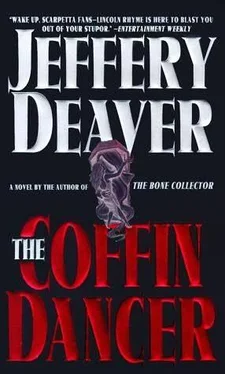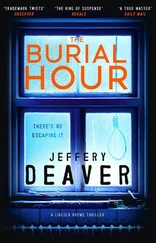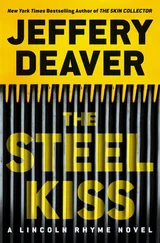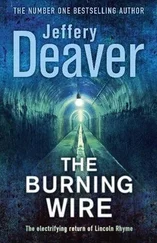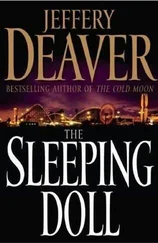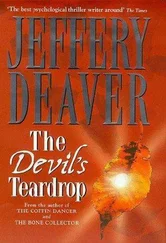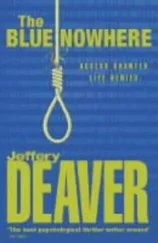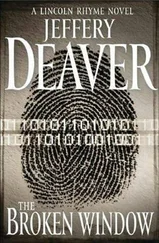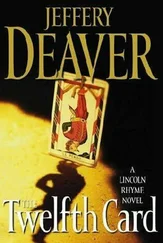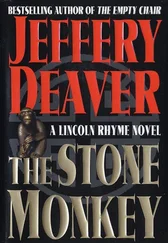Jeffery Deaver - The Coffin Dancer
Здесь есть возможность читать онлайн «Jeffery Deaver - The Coffin Dancer» весь текст электронной книги совершенно бесплатно (целиком полную версию без сокращений). В некоторых случаях можно слушать аудио, скачать через торрент в формате fb2 и присутствует краткое содержание. Жанр: Триллер, на английском языке. Описание произведения, (предисловие) а так же отзывы посетителей доступны на портале библиотеки ЛибКат.
- Название:The Coffin Dancer
- Автор:
- Жанр:
- Год:неизвестен
- ISBN:нет данных
- Рейтинг книги:3 / 5. Голосов: 1
-
Избранное:Добавить в избранное
- Отзывы:
-
Ваша оценка:
- 60
- 1
- 2
- 3
- 4
- 5
The Coffin Dancer: краткое содержание, описание и аннотация
Предлагаем к чтению аннотацию, описание, краткое содержание или предисловие (зависит от того, что написал сам автор книги «The Coffin Dancer»). Если вы не нашли необходимую информацию о книге — напишите в комментариях, мы постараемся отыскать её.
The Coffin Dancer — читать онлайн бесплатно полную книгу (весь текст) целиком
Ниже представлен текст книги, разбитый по страницам. Система сохранения места последней прочитанной страницы, позволяет с удобством читать онлайн бесплатно книгу «The Coffin Dancer», без необходимости каждый раз заново искать на чём Вы остановились. Поставьте закладку, и сможете в любой момент перейти на страницу, на которой закончили чтение.
Интервал:
Закладка:
Rhyme called, “Let’s go, Sachs. You’re just standing around! What’ve we got?”
She offered a cold smile and walked over to Cooper’s table, where the tech was carefully laying out the contents of the bags.
What was her problem today? An hour was plenty of time to search a scene, if that’s what she was upset about. Well, he liked her feisty. He himself was always at his best that way. “Okay, Thom, help us out here. The blackboard. We need to list the evidence. Make us some charts. ‘CS-One.’ The first heading.”
“C, uhm, S?”
“ ‘Crime scene,’ ” the criminalist snapped. “What else would it be? ‘CS-One, Chicago.’ ”
In a recent case, Rhyme had used the back of a limp Metropolitan Museum poster as an evidence profiling chart. He now was state of the art – several large chalkboards were mounted to the wall, redolent with scents that took him back to humid spring school days in the Midwest, living for science class and despising spelling and English.
The aide, casting an exasperated glance toward his boss, picked up the chalk, brushed some dust from his perfect tie and knife-crease slacks, and wrote.
“What do we have, Mel? Sachs, help him.”
They began unloading the plastic bags and plastic jars of ash and bits of metal and fiber and wads of plastic. They assembled contents in porcelain trays. The crash site searchers – if they were on a par with the men and women Rhyme had trained – would have used roller-mounted magnets, large vacuum cleaners, and a series of fine mesh screens to locate debris from the blast.
Rhyme, expert in most areas of forensics, was an authority on bombs. He’d had no particular interest in the subject until the Dancer left his tiny package in the wastebasket of the Wall Street office where Rhyme’s two techs were killed. After that Rhyme had taken it on himself to learn everything he could about explosives. He’d studied with the FBI’s Explosives Unit, one of the smallest – but most elite – in the federal lab, composed of fourteen agent-examiners and technicians. They didn’t find lEDs – improvised explosive devices, the law enforcement term for bombs – and they didn’t render them safe. Their job was to analyze bombs and bomb crime scenes and to trace and categorize the makers and their students (bomb manufacture was considered an art in certain circles and apprentices worked hard to learn the techniques of famous bomb makers).
Sachs was poking over the bags. “Doesn’t a bomb destroy itself?”
“Nothing’s ever completely destroyed, Sachs. Remember that.” Though as he wheeled closer and examined the bags, he admitted, “This was a bad one. See those fragments? That pile of aluminum on the left? The metal’s shattered, not bent. That means the device had a high brisance -”
“High…?” Sellitto asked.
“Brisance.” Rhyme explained: “Detonation rate. But even so, sixty to ninety percent of a bomb survives the blast. Well, not the explosive, of course. Though there’s always enough residue to type it. Oh, we’ve got plenty to work with here.”
“Plenty?” Dellray snorted a laugh. “Bad as puttin’ Humpty-Dumpty together again.”
“Ah, but that’s not our job, Fred,” Rhyme said briskly. “All we need to do is catch the son of a bitch who pushed him off the wall.” He wheeled farther down the table. “What’s it look like, Mel? I see battery, I see wire, I see timer. What else? Maybe bits of the container or packing?”
Suitcases have convicted more bombers than timers and detonators. It’s not talked about but unclaimed baggage is often donated to the FBI by airlines and blown up in an attempt to duplicate explosions and provide standards for criminalists. In the Pan Am flight 103 bombing, the FBI identified the bombers not through the explosive itself but through the Toshiba radio it had been hidden in, the Samsonite suitcase containing the radio, and the clothes packed around it. The clothing in the suitcase was traced back to a store in Sliema, Malta, whose owner identified a Libyan intelligence agent as the person who’d bought the garments.
But Cooper shook his head. “Nothing near the seat of detonation except bomb components.”
“So it wasn’t in a suitcase or flight bag,” Rhyme mused. “Interesting. How the hell did he get it on board? Where’d he plant it? Lon, read me the report from Chicago.”
“ ‘Difficult to determine exact blast location,’ ” Sellitto read, “ ‘because of extensive fire and destruction of aircraft. Site of device seems to be underneath and behind the cockpit.’ ”
“Underneath and behind. I wonder if a cargo bay’s there. Maybe…” Rhyme fell silent. His head swiveled back and forth, gazing at the evidence bags. “Wait, wait!” he shouted. “Mel, let me see those bits of metal there. Third bag from the left. The aluminum. Put it under a ’scope.”
Cooper had connected the video output of his compound microscope to Rhyme’s computer. What Cooper saw, Rhyme could see. The tech began mounting samples of the minuscule bits of debris on slides and running them under the ’scope.
A moment later Rhyme ordered, “Cursor down. Double click.”
The image on his computer screen magnified.
“There, look! The skin of the plane was blown inward.”
“Inward?” Sachs asked. “You mean the bomb was on the outside?”
“I think so, yes. What about it, Mel?”
“You’re right. Those polished rivet heads are all bent inward. It was outside, definitely.”
“A rocket maybe?” Dellray asked. “SAM?”
Reading from the report Sellitto said, “No radar blips consistent with missiles.”
Rhyme shook his head. “No, everything points to a bomb.”
“But on the outside?” Sellitto asked. “Never heard of that before.”
“That explains this,” Cooper called. The tech, wearing magnifying goggles and armed with a ceramic probe, was looking over bits of metal as fast as a cowboy counts heads in a herd. “Fragments of ferrous metal. Magnets. Wouldn’t stick to the aluminum skin but there was steel under it. And I’ve got bits of epoxy resin. He stuck the bomb on the outside with the magnets to hold it until the glue hardened.”
“And look at the shock waves in the epoxy,” Rhyme pointed out. “The glue wasn’t completely set, so he planted it not long before takeoff.”
“Can we brand the epoxy?”
“Nope. Generic composition. Sold everywhere.”
“Any hope of prints? Tell me true, Mel.”
Cooper’s answer was a faint, skeptical laugh. But he went through the motions anyway and scanned the fragments with the PoliLight wand. Nothing was evident except the blast residue. “Not a thing.”
“I want to smell it,” Rhyme announced.
“Smell it?” Sachs asked.
“With the brisance, we know it’s high explosive. I want to know exactly what kind.”
Many bombers used low explosives – substances that burn quickly but don’t explode unless confined in, say, a pipe or box. Gunpowder was the most common of these. High explosives – like plastic or TNT – detonate in their natural state and don’t need to be packed inside anything. They were expensive and hard to come by. The type and source of explosive could tell a lot about the bomber’s identity.
Sachs brought a bag to Rhyme’s chair and opened it. He inhaled.
“RDX,” Rhyme said, recognizing it immediately.
“Consistent with the brisance,” Cooper said. “You thinking C three or C four?” Cooper asked. RDX was the main component of these two plastic explosives, which were military; they were illegal for a civilian to possess.
“Not C three,” Rhyme said, again smelling the explosive as if it were a vintage Bordeaux. “No sweet smell… Not sure. And strange… I smell something else… GC it, Mel.”
Читать дальшеИнтервал:
Закладка:
Похожие книги на «The Coffin Dancer»
Представляем Вашему вниманию похожие книги на «The Coffin Dancer» списком для выбора. Мы отобрали схожую по названию и смыслу литературу в надежде предоставить читателям больше вариантов отыскать новые, интересные, ещё непрочитанные произведения.
Обсуждение, отзывы о книге «The Coffin Dancer» и просто собственные мнения читателей. Оставьте ваши комментарии, напишите, что Вы думаете о произведении, его смысле или главных героях. Укажите что конкретно понравилось, а что нет, и почему Вы так считаете.
